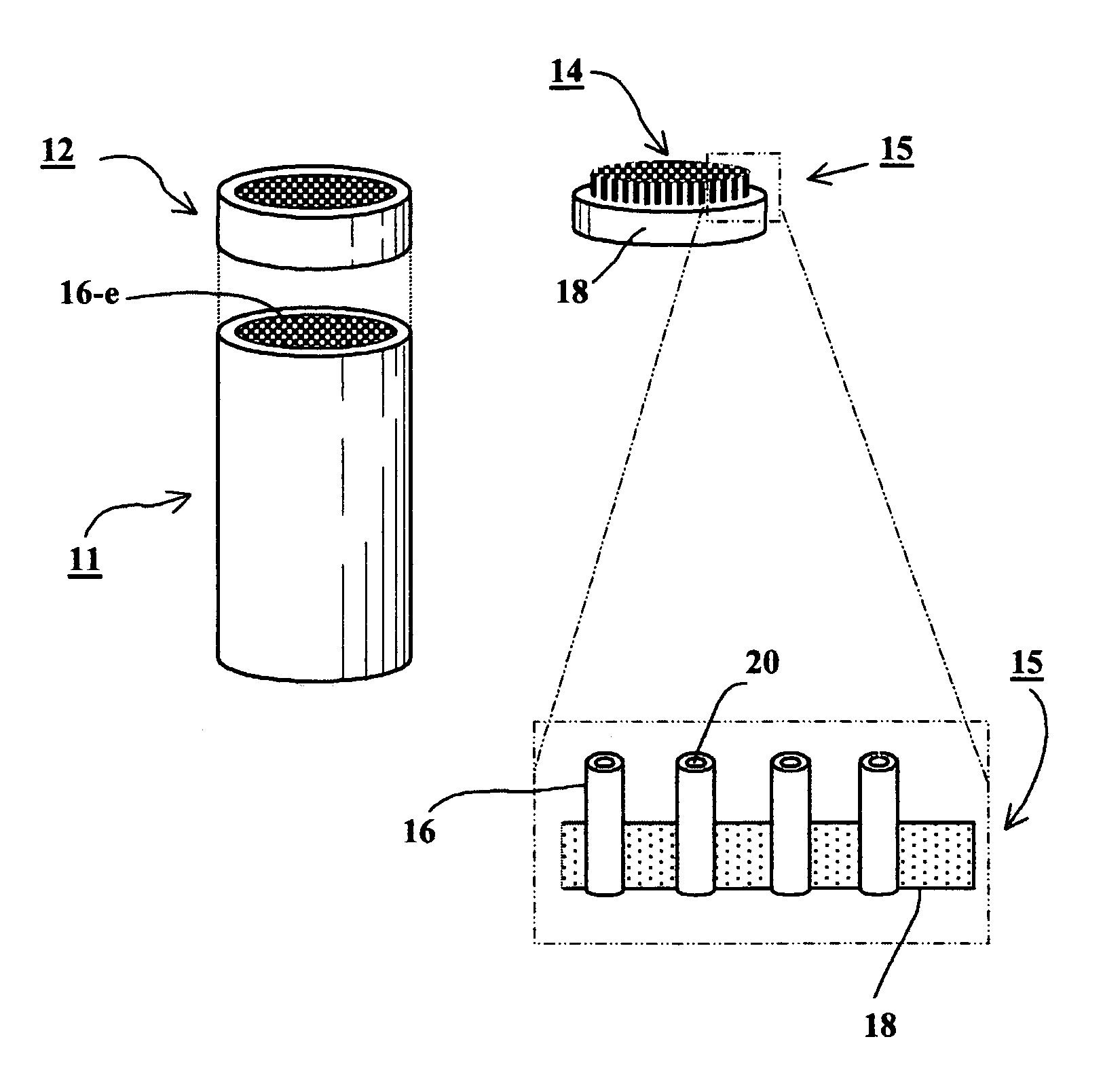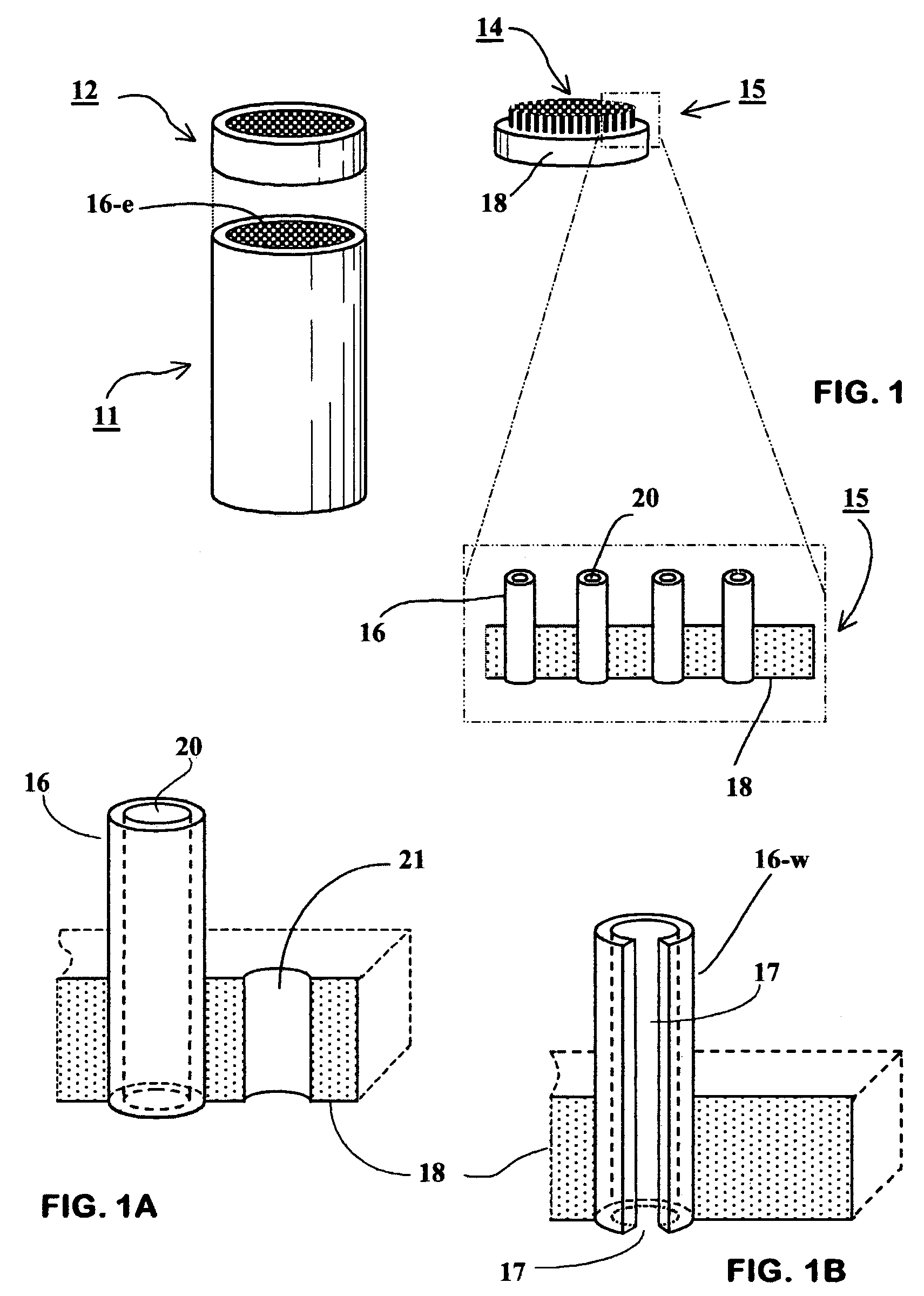Microfabrication method based on metal matrix composite technology
a metal matrix composite technology and microfabrication method technology, applied in the direction of photomechanical equipment, magnets, instruments, etc., can solve the problems of inconvenient removal, large design, geometry and materials complexity, and the microparts could have micron range dimensions and considerable complexity in design, geometry and materials
- Summary
- Abstract
- Description
- Claims
- Application Information
AI Technical Summary
Benefits of technology
Problems solved by technology
Method used
Image
Examples
Embodiment Construction
[0132]The invention is the method for manufacturing of microstructural components, microparts assemblies and individual microparts. More precisely method is for manufacturing a wafer or disk having an array of micro protrusions, protruding from and bonded to a substrate. Each protrusion constitutes an individual micropart, which could be solid or hollow, having simple or complex geometry, made of one or several materials.
[0133]The method comprising the steps of:[0134]1. Fabricating of unidirectional metal matrix composite having a structure, which define the microstructural assembly and microparts.[0135]2. Preparation of the composite slices or sections.[0136]3. Developing microparts assembly by partial etching of matrix, or developing individual microparts by etching a matrix entirely off. Developing the hollow microneedles by etching out the microneedles cores.
[0137]A microneedles wafer and an array of micropunches have a simple geometry and are convenient examples of microparts a...
PUM
| Property | Measurement | Unit |
|---|---|---|
| Length | aaaaa | aaaaa |
| Length | aaaaa | aaaaa |
| Length | aaaaa | aaaaa |
Abstract
Description
Claims
Application Information
 Login to View More
Login to View More - R&D
- Intellectual Property
- Life Sciences
- Materials
- Tech Scout
- Unparalleled Data Quality
- Higher Quality Content
- 60% Fewer Hallucinations
Browse by: Latest US Patents, China's latest patents, Technical Efficacy Thesaurus, Application Domain, Technology Topic, Popular Technical Reports.
© 2025 PatSnap. All rights reserved.Legal|Privacy policy|Modern Slavery Act Transparency Statement|Sitemap|About US| Contact US: help@patsnap.com



